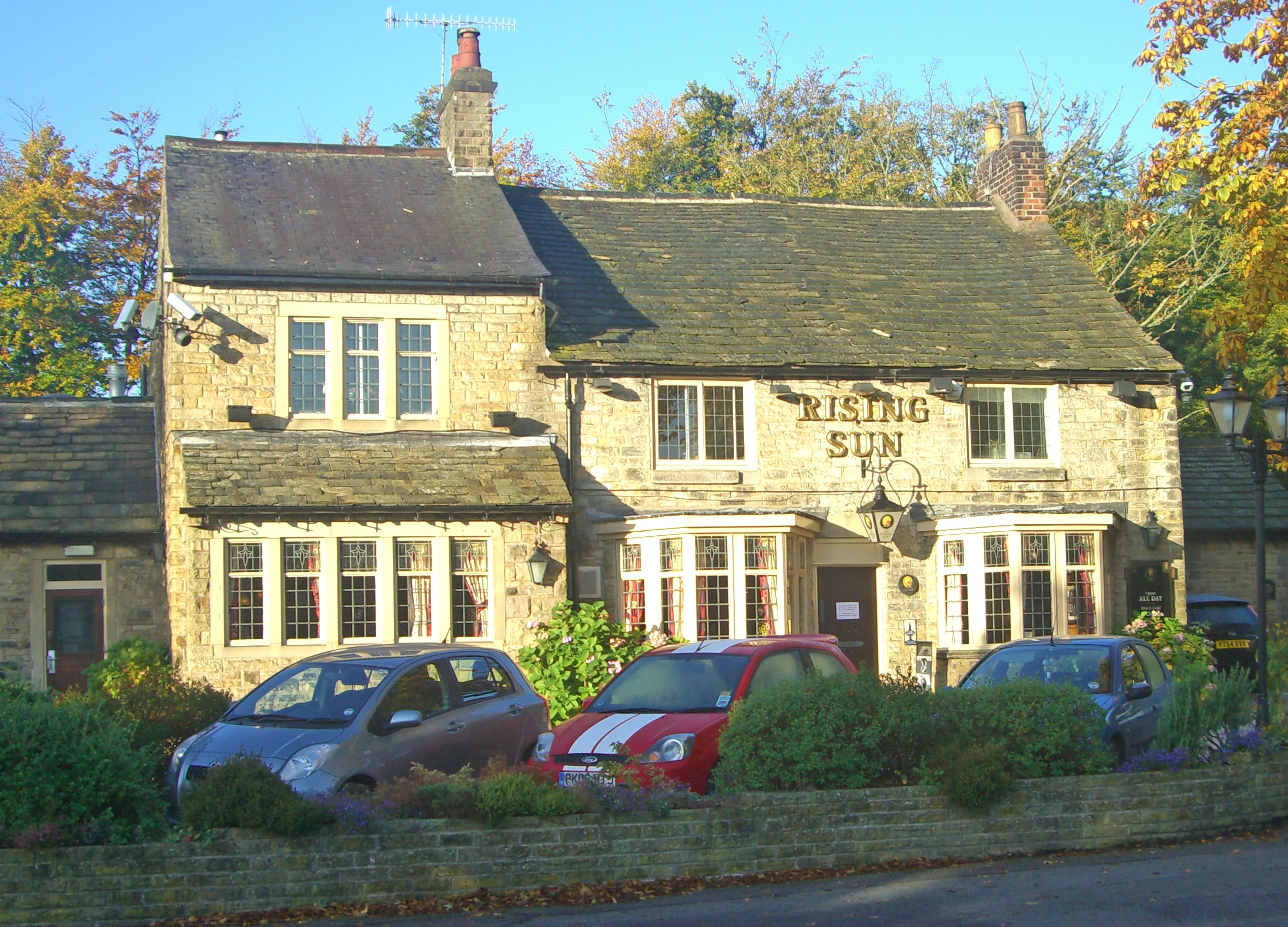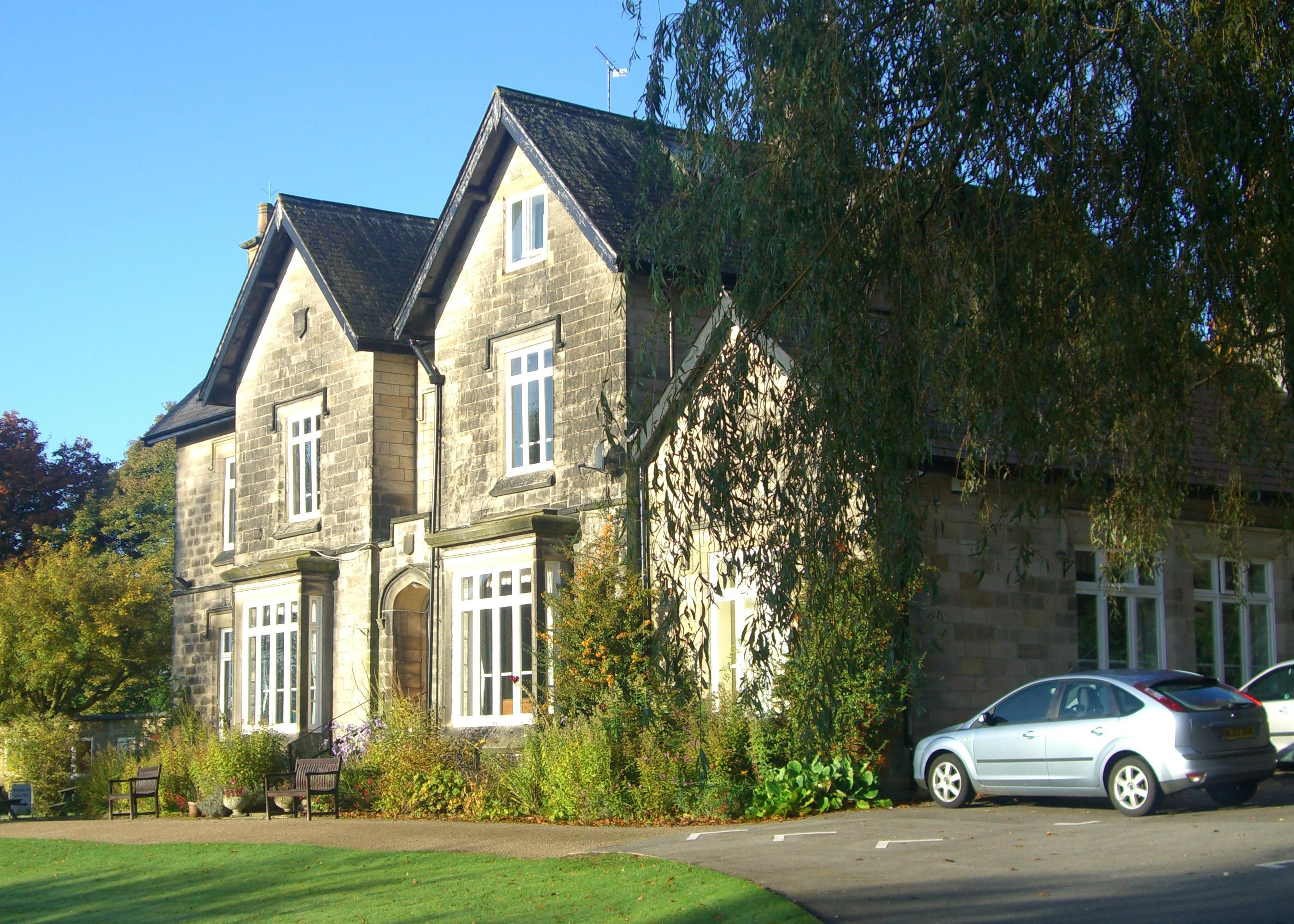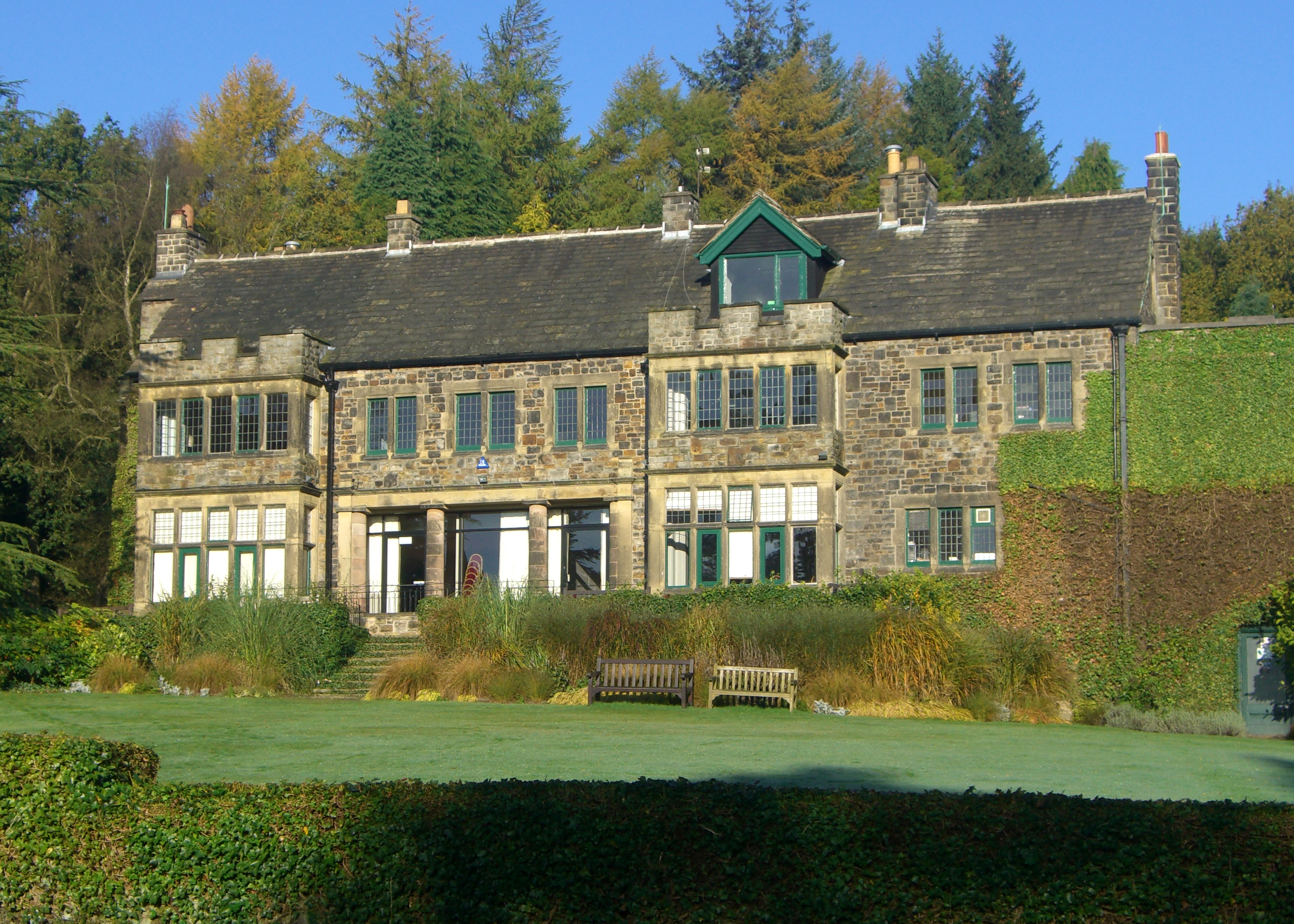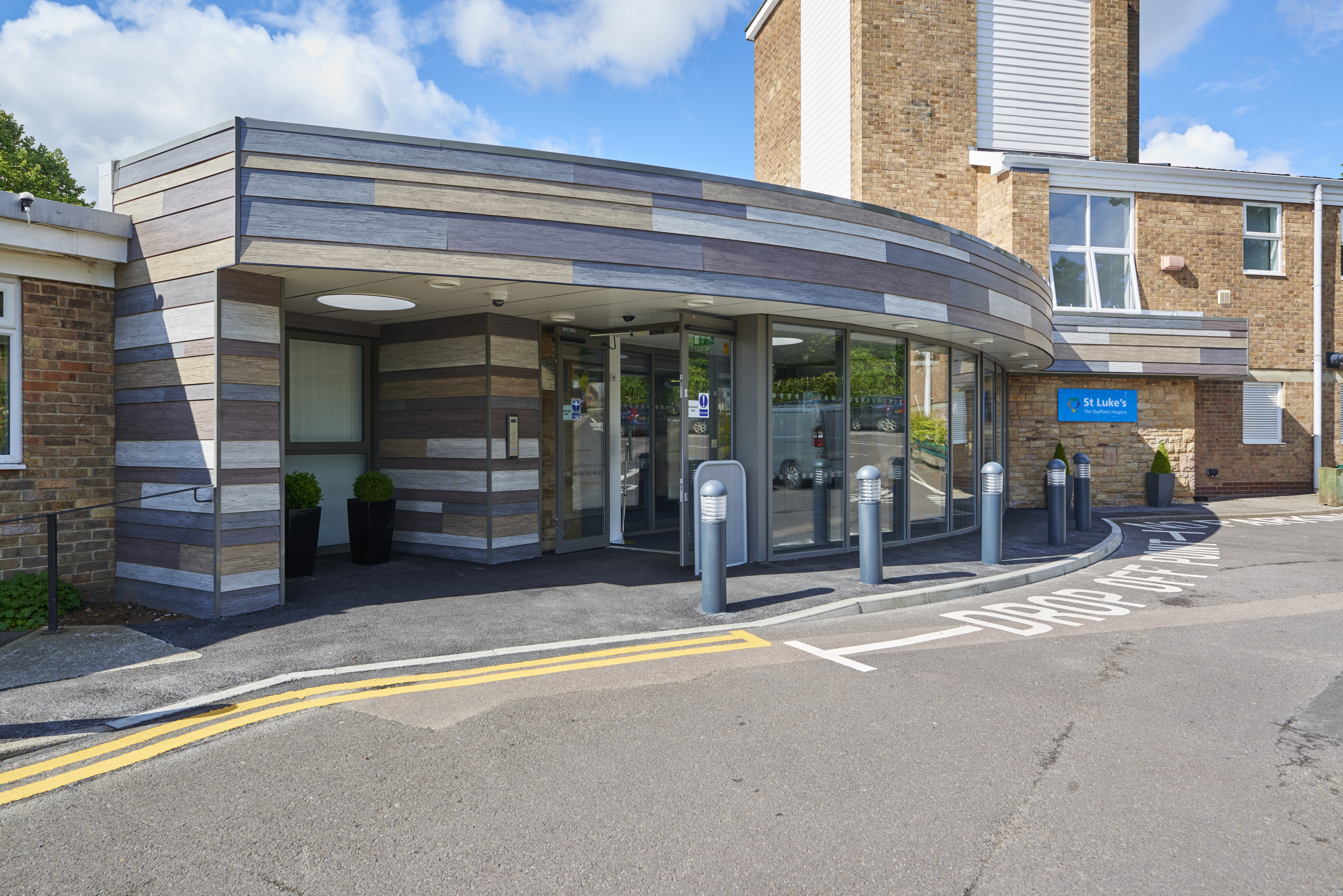Whirlow on:
[Wikipedia]
[Google]
[Amazon]
 Whirlow is a suburb of the City of
Whirlow is a suburb of the City of

Gives detail of grange. Now demolished (2018) and rebuilt as a block of 9 flats

Gives detail of Whirlow Brook Hall. Sheffield Star - Sheffield park cafe protest as closure looms
Gives details of café closure.
 St Luke's Hospice is located on Little Common Lane and cares for people aged 18 and above from across Sheffield who have incurable illnesses. It was opened in October 1971 on land donated by
St Luke's Hospice is located on Little Common Lane and cares for people aged 18 and above from across Sheffield who have incurable illnesses. It was opened in October 1971 on land donated by
Gives detail of St Lukes Hospice. Whirlow has two parks, the already mentioned Whirlow Brook Park is classed as a district park and is looked after by the council. Whinfell Quarry Garden was originally the garden to Whinfell, a house built for the industrialist Samuel Doncaster in 1897 and gutted by fire in June 1971. The gardens were designed as a series of winding walks with ponds and waterfalls and were given to the City of Sheffield in 1968 by the Neill family as a memorial to Sir Frederick Neill (1891-1967) industrial entrepreneur and Master Cutler in 1937. Parks and Gardens UK
Gives detail of Whinfell Quarry Garden.
Gives statistics.
 Whirlow is a suburb of the City of
Whirlow is a suburb of the City of Sheffield
Sheffield is a city in South Yorkshire, England, whose name derives from the River Sheaf which runs through it. The city serves as the administrative centre of the City of Sheffield. It is historically part of the West Riding of Yorkshire a ...
in England, it lies south-west of the city centre. The suburb falls within the Dore and Totley ward of the City. It is one of the most affluent areas of Sheffield, with much high class housing and several notable small country houses
An English country house is a large house or mansion in the English countryside. Such houses were often owned by individuals who also owned a town house. This allowed them to spend time in the country and in the city—hence, for these peopl ...
within it. During the Victorian era
In the history of the United Kingdom and the British Empire, the Victorian era was the period of Queen Victoria's reign, from 20 June 1837 until her death on 22 January 1901. The era followed the Georgian period and preceded the Edwardia ...
it was home to some of Sheffield's most influential citizens. Whirlow straddles the A625 (Ecclesall Road South), the main Sheffield to Hathersage
Hathersage ( ) is a village and civil parish in the Peak District in Derbyshire, England. It lies slightly to the north of the River Derwent, approximately south-west of Sheffield.
Toponymy
The origin of its name is disputed, although it is ...
road. The suburb covers the area from Parkhead in the north to Whirlow Bridge in the south and from Ecclesall Woods
Ecclesall Woods is an area of woodland in south-west Sheffield, South Yorkshire, England, between Abbeydale Road South and Ecclesall. It covers approximately of mature semi-natural deciduous woodland which was previously used for timber and cha ...
in the east to Broad Elms Lane in the west. Whirlow had a population of 1,663 in 2011.
Etymology
The name Whirlow means “Boundary Mound”, it is a very appropriate, as the nearbyLimb Brook
The Limb Brook is a stream in Sheffield, South Yorkshire, England. It rises at the village of Ringinglow, flowing east through Whirlow and Ecclesall Woods into Abbeydale in the Beauchief area, where it merges with the River Sheaf. Near this ...
which rises on the moors around Ringinglow
Ringinglow is a village in the western section of Sheffield, England. It is on the western border of Ecclesall Ward, and although it is within the boundary of Sheffield, it is self-contained, being entirely surrounded by open countryside. The ...
and flows south-east through Whirlow on its way to join the River Sheaf
The River Sheaf in Sheffield, South Yorkshire, England, flows northwards, past Dore, through Abbeydale and north of Heeley. It then passes into a culvert, through which it flows under the centre of Sheffield before joining the River Don. T ...
at Abbeydale was formerly an important boundary marker. The brook separated the ancient kingdoms of Mercia
la, Merciorum regnum
, conventional_long_name=Kingdom of Mercia
, common_name=Mercia
, status=Kingdom
, status_text=Independent kingdom (527–879) Client state of Wessex ()
, life_span=527–918
, era= Heptarchy
, event_start=
, date_start=
, ...
and Northumbria
la, Regnum Northanhymbrorum
, conventional_long_name = Kingdom of Northumbria
, common_name = Northumbria
, status = State
, status_text = Unified Anglian kingdom (before 876)North: Anglian kingdom (af ...
as well as the ecclesiastical province
An ecclesiastical province is one of the basic forms of jurisdiction in Christian Churches with traditional hierarchical structure, including Western Christianity and Eastern Christianity. In general, an ecclesiastical province consists of seve ...
s of Canterbury
Canterbury (, ) is a cathedral city and UNESCO World Heritage Site, situated in the heart of the City of Canterbury local government district of Kent, England. It lies on the River Stour.
The Archbishop of Canterbury is the primate of ...
and York
York is a cathedral city with Roman origins, sited at the confluence of the rivers Ouse and Foss in North Yorkshire, England. It is the historic county town of Yorkshire. The city has many historic buildings and other structures, such as a ...
and latterly the counties of Yorkshire
Yorkshire ( ; abbreviated Yorks), formally known as the County of York, is a historic county in northern England and by far the largest in the United Kingdom. Because of its large area in comparison with other English counties, functions have ...
and Derbyshire
Derbyshire ( ) is a ceremonial county in the East Midlands, England. It includes much of the Peak District National Park, the southern end of the Pennine range of hills and part of the National Forest. It borders Greater Manchester to the nor ...
. Whirlow has had many spelling variations over the centuries including Horlow, Hurlowe, Horlowe, Horloo, Whirlowe, Whirlawe and Whirley.''"Historic Hallamshire"'', David Hey, Landmark Publishing Ltd. , Page 11, Name meaning.
History
The use of the suffix “Low” in a place name often means atumulus
A tumulus (plural tumuli) is a mound of earth and stones raised over a grave or graves. Tumuli are also known as barrows, burial mounds or ''kurgans'', and may be found throughout much of the world. A cairn, which is a mound of stones bu ...
. Although no burial remains have been found at Whirlow there is a strong possibility that there was a burial mound in the vicinity which indicates the presence of the Tumulus culture
__NOTOC__
The Tumulus culture (German::de:Mittlere Bronzezeit, ''Hügelgräberkultur'') dominated Central Europe during the European Bronze Age, Middle Bronze Age ( 1600 to 1300 BC).
It was the descendant of the Unetice culture. Its heartl ...
of the Middle Bronze Age people. In 2011 excavations revealed remains of a substantial 1st or 2nd century AD Roman
Roman or Romans most often refers to:
*Rome, the capital city of Italy
*Ancient Rome, Roman civilization from 8th century BC to 5th century AD
*Roman people, the people of ancient Rome
*'' Epistle to the Romans'', shortened to ''Romans'', a lette ...
rural estate centre, or ‘villa
A villa is a type of house that was originally an ancient Roman upper class country house. Since its origins in the Roman villa, the idea and function of a villa have evolved considerably. After the fall of the Roman Republic, villas became s ...
’ on what is believed to be a pre-existing Brigantian farmstead at Whirlow Hall Farm
Whirlow Hall Farm is a working farm situated on Broad Elms Lane at Whirlow in the City of Sheffield, England. Since 1979 it has been the site of the Whirlow Hall Farm Trust, a registered charity which allows children and young people to visit a w ...
. The excavations also revealed pieces of Mesolithic chipped flint which included a microlith, scraper and retouched blade. In the years following the Norman conquest of England, the hamlet of Whirlow was part of the manor of Ecclesall
Ecclesall Ward—which includes the Areas of Sheffield, neighbourhoods of Banner Cross, Bents Green, Carterknowle, Ecclesall, Greystones, Millhouses, and Ringinglow—is one of the 28 electoral wards in Sheffield, City of Sheffield, England. I ...
. The name of the Parkhead district is a reminder that the area was a medieval deer park which stretched down the hill to the River Sheaf. In the 16th century the park was changed into a coppice
Coppicing is a traditional method of woodland management which exploits the capacity of many species of trees to put out new shoots from their stump or roots if cut down. In a coppiced wood, which is called a copse, young tree stems are repeate ...
wood, the same size and shape as the present day Ecclesall Woods. The first documented mention of Whirlow came in a grant of land of 1296 in "le Horlowe" in "le parke de Ekilsale (Ecclesall)" between Robert son of Ralph de Ekilsale to Richard son of William son of Cescile de Ekilsale.
The early cottages in the area were simple timber framed buildings, possibly cruck
A cruck or crook frame is a curved timber, one of a pair, which support the roof of a building, historically used in England and Wales. This type of timber framing consists of long, generally naturally curved, timber members that lean inwards and ...
-built with wattle and daub
Wattle and daub is a composite building method used for making walls and buildings, in which a woven lattice of wooden strips called wattle is daubed with a sticky material usually made of some combination of wet soil, clay, sand, animal dung a ...
walls, by the 17th century the walls would be infilled with stone. The 1650s saw Whirlow caught up in the building boom which followed the end of the English Civil War
The English Civil War (1642–1651) was a series of civil wars and political machinations between Parliamentarians (" Roundheads") and Royalists led by Charles I ("Cavaliers"), mainly over the manner of England's governance and issues of re ...
. Many of the existing timber buildings were rebuilt in stone which was readily available from the nearby Brincliffe Edge quarries which had been producing stone since 1575. Whirlow remained a very rural area until the middle of the 19th century, however the passing of the Turnpike Act of May 1811 which authorised a new road from Banner Cross
Nether Edge and Sharrow Ward , which includes the districts of Brincliffe, Nether Edge, Sharrow, and part of Highfield, is one of the 28 electoral wards in the City of Sheffield, England. It is located in the southern part of the city and cove ...
to Fox House near Hathersage signalled a new era for Whirlow. From 1840 large houses started to be built along the new turnpike road as the new prosperity of the industrial town of Sheffield made it desirable for its wealthier citizens to leave their house in the centre of the town and move to the pleasanter western outskirts. After the First World War
World War I (28 July 1914 11 November 1918), often abbreviated as WWI, was one of the deadliest global conflicts in history. Belligerents included much of Europe, the Russian Empire, the United States, and the Ottoman Empire, with fightin ...
increasing amounts of land were released for development and new roads were created to accommodate the housing. After the Second World War
World War II or the Second World War, often abbreviated as WWII or WW2, was a world war that lasted from 1939 to 1945. It involved the vast majority of the world's countries—including all of the great powers—forming two opposi ...
the reduction in agriculture saw many of the farms and workers cottages purchased to be restored and used as private dwellings.''"Whirlow - The Story Of An Ancient Sheffield Hamlet"'', Shirley Frost, J.W. Northend Ltd. (Publishers) , Pages 1 - 5 and 52 - 80 Gives history and details of historic houses.
Significant buildings
Whirlow has a high proportion of large impressive houses, many of these were built by Sheffield'sNouveau riche
''Nouveau riche'' (; ) is a term used, usually in a derogatory way, to describe those whose wealth has been acquired within their own generation, rather than by familial inheritance. The equivalent English term is the "new rich" or "new money" ( ...
in the Victorian era. They had acquired their wealth as Sheffield became a wealthy city as a result of its industrial development.
Parkhead Hall a Grade II listed building
In the United Kingdom, a listed building or listed structure is one that has been placed on one of the four statutory lists maintained by Historic England in England, Historic Environment Scotland in Scotland, in Wales, and the Northern Irel ...
was built in 1865 by the architect J.B. Mitchell-Withers for his own use, the steel magnate Sir Robert Hadfield
Sir Robert Abbott Hadfield, 1st Baronet FRS (28 November 1858 in Sheffield – 30 September 1940 in Surrey) was an English metallurgist, noted for his 1882 discovery of manganese steel, one of the first steel alloys. He also invented silicon ...
lived there between 1898 and 1939. Whirlow Hall Farm stands on the site of the old Whirlow Hall, the seat of the Brights, an ancient Whirlow family who lived in the area as early as the 14th century. The present building dates from 1843 and is the site of the Whirlow Hall Farm Trust, a working farm and registered charity which allows inner city children to experience farm life.

Whirlow Grange
The first of the large houses to be built on the new road in Whirlow in 1840. Built by the architectWilliam Flockton
Flockton's were a series of architectural firms in the 19th and early 20th centuries, based in Sheffield, England
England is a country that is part of the United Kingdom. It shares land borders with Wales to its west and Scotland to its ...
for Henry Waterfall, an attorney, it was originally called Whirlow Cottage until a name change in 1873. A ballroom was added in 1898 as was the fashion of that time. It became the Sheffield Diocesan Conference Centre in 1953 and today trading as Whirlow Grange Limited it hosts conferences, weddings and courses. whirlowgrange.co.uk - About Whirlow Grange Gives detail of grange. Now demolished (2018) and rebuilt as a block of 9 flats
Whirlow Court
James Fawcett, joint owner of the Sheffield silversmiths James Dixon & Sons built Whirlow Court, a small country house in the early 1880s. It originally had substantial grounds covering many acres, over the years the land has been sold off, with the housing on Whirlow Court Road, Whirlowdale Close, Whirlowdale Rise and Whirlow Grove all built on land which was originally part of the estate. Frederick Wild, magistrate and a businessman who had beenMaster Cutler
The Master Cutler is the head of the Company of Cutlers in Hallamshire established in 1624. Their role is to act as an ambassador of industry in Sheffield, England. The Master Cutler is elected by the freemen of the company on the first Monday of ...
in 1898/99, lived at the house between 1915 and 1920. Arthur Davy, the prominent Sheffield grocer lived at Whirlow Court between 1920 and 1946 and was followed by Maurice Batchelor, Chairman of Batchelors
Batchelors is a popular brand of predominantly dried food products. The Bachelors company was founded in 1895 in Sheffield, England by William Batchelor, initially specialising in canned vegetables. It released its first dried soup in 1949, an ...
peas, who lived there up to 1954. In 1956 Whirlow Court was bought by Sheffield City Council, serving as the official residence of the Lord Mayor of Sheffield and visiting High Court Judges. In 1981 it was taken over by The Lord Chancellor's Department and is now used as lodgings for visiting judges. It is Grade II listed. Gives detail of Whirlow Court.

Whirlow Brook Hall
Built by Percy Fawcett in 1906, he had moved from Middlewood Hall to be close to his brother who had inherited Whirlow Court. The house is stone built with long windows and is set on an elevated terrace which gives fine views over Ecclesall Woods to Abbeydale. In 1920 the house came into the possession of Walter Benton Jones and his wife Madge, they were keen gardeners and along with six staff developed the grounds to a very high standard. After Madge's death in 1938 the house along with 39 acres of grounds was sold to a consortium which included the Town Trustees, the Graves Charitable Trust andSheffield Corporation
Sheffield City Council is the city council for the metropolitan borough of Sheffield in South Yorkshire, England. It consists of 84 councillors, elected to represent 28 wards, each with three councillors. It is currently under No Overall Contr ...
for £15,000. The grounds were opened to the public in 1951 as Whirlow Brook Park, the house is now a venue for weddings, conferences and events, for many years there was a café for visitors within the house but this closed in October 2012. whirlowbrookhall.co.uk Gives detail of Whirlow Brook Hall. Sheffield Star - Sheffield park cafe protest as closure looms
Gives details of café closure.
Other historic buildings
Hollis Hospital is a Grade II listed building situated at the end of a long drive off Ecclesall Road South near Whirlow Bridge. It was constructed In 1903. The hospital was formerly situated in the centre of Sheffield near Snig Hill and moved to Whirlow when the land was needed for redevelopment. Gives details of Hollis Hospital. Whirlow House is a large modern building dating from 1993, the previous building on the site also known as Whirlow House was built by the solicitor Frederick Wilson in 1841. The house subsequently had three owners connected with the Sheffield steel industry, these being Henry Furniss, Bernard Firth andEdgar Allan
Edgar Allan (February 26, 1842 – October 28, 1904), emigrated from England to become a U.S. soldier during the American Civil War, then settled in Virginia, where he became a lawyer, a farmer and a leading Republican politician. He served in ...
. It was demolished 1977 and replaced with the current building.''"Sheffield‘s Remarkable Houses"'', Roger Redfern, The Cottage Press, , Pages 36- 40 Gives details of historical houses.
Broomcroft was built by the architect J.B. Mitchell-Withers in 1883 for David Davy, owner of the Davy steelworks in Sheffield. After Davy's death in 1923 it was sold and remained a private residence until it was given to the City of Sheffield in 1953 by George Jowett. Broomcroft then became a council run nursing home and in April 1989 it was sold for £1.4 million to the private healthcare company Bupa who have carried out extensive renovations and continue to run it as an 87-bed unit for the elderly. Clifford House was built in 1894 for the colliery owner Denys Hague. From 1915 the house was lived in by Charles Clifford chairman of the '' Telegraph and Star'' newspaper who would later become the main benefactor of the Charles Clifford Dental Hospital in central Sheffield.
Amenities
Whirlow is a suburb with very few amenities, it tends to use the facilities based in adjacent suburbs. It has no retail shops, schools, churches or GP surgeries within its boundaries. The nearest shops being at Parkhead crossroads. The closest GP practice is the Bents Green Surgery. All Saints Church, Ecclesall is the local parish church, just over two km away. The only public house in Whirlow is the Rising Sun on Abbey Lane, it began as a small cottage and has been altered and enlarged many times over the years, it was first recorded as a public house at the end of the 18th century when Sampson Brookshaw was the innkeeper. The nearest schools are the Dobcroft Junior and Infant school at Millhouses and Silverdale Secondary School at Bents Green, Silverdale was completely rebuilt and modernised in 2009. St Luke's Hospice is located on Little Common Lane and cares for people aged 18 and above from across Sheffield who have incurable illnesses. It was opened in October 1971 on land donated by
St Luke's Hospice is located on Little Common Lane and cares for people aged 18 and above from across Sheffield who have incurable illnesses. It was opened in October 1971 on land donated by British Steel Corporation
British may refer to:
Peoples, culture, and language
* British people, nationals or natives of the United Kingdom, British Overseas Territories, and Crown Dependencies.
** Britishness, the British identity and common culture
* British English, ...
who at that time owned the adjacent Clifford House. The hospice is a registered charity and only receives 25% of its funding from the NHS, raising over £7 million annually through charity to continue its work. stlukeshospice.org.uk Gives detail of St Lukes Hospice. Whirlow has two parks, the already mentioned Whirlow Brook Park is classed as a district park and is looked after by the council. Whinfell Quarry Garden was originally the garden to Whinfell, a house built for the industrialist Samuel Doncaster in 1897 and gutted by fire in June 1971. The gardens were designed as a series of winding walks with ponds and waterfalls and were given to the City of Sheffield in 1968 by the Neill family as a memorial to Sir Frederick Neill (1891-1967) industrial entrepreneur and Master Cutler in 1937. Parks and Gardens UK
Gives detail of Whinfell Quarry Garden.
Statistics
Statistics show Whirlow as a wealthy, well educated area with low unemployment. Over 92% of residents own their own homes compared to the Sheffield average of 60%. Over 60% of the houses aredetached
A stand-alone house (also called a single-detached dwelling, detached residence or detached house) is a free-standing residential building. It is sometimes referred to as a single-family home, as opposed to a multi-family residential dwelli ...
compared to the city average of 14%. Only 1.7% of the population is claiming housing benefit compared to the city average of almost 18% and the Whirlow area is ranked as a least deprived area in the deprivation indicator. The suburb has an unemployment rate of 1% while almost 43% of the population are educated to degree standard compared to the Sheffield average of 19%. Whirlow / Abbeydale Neighbourhood Profile 2005/06 Gives statistics.
References
{{Districts of Sheffield Suburbs of Sheffield History of Sheffield